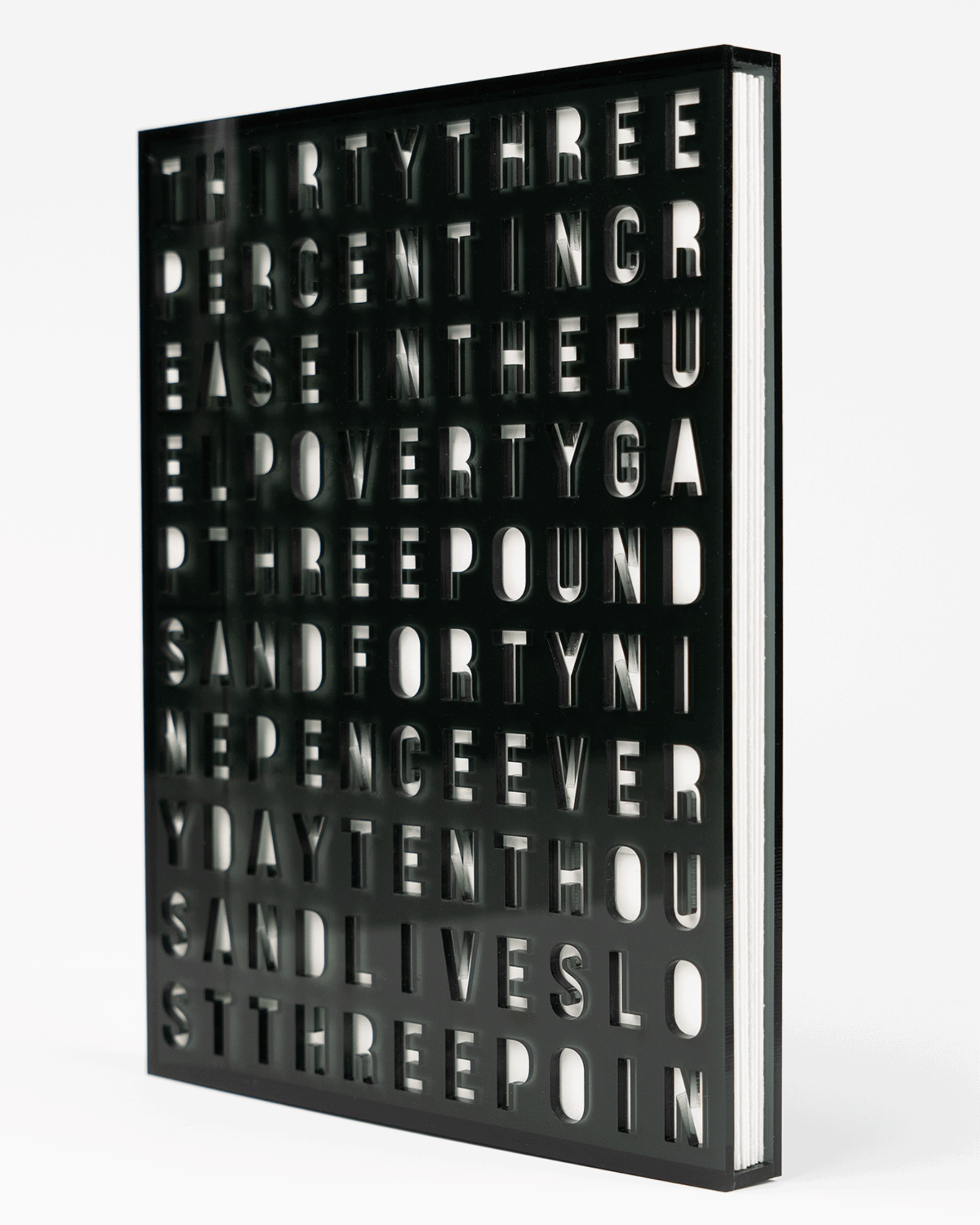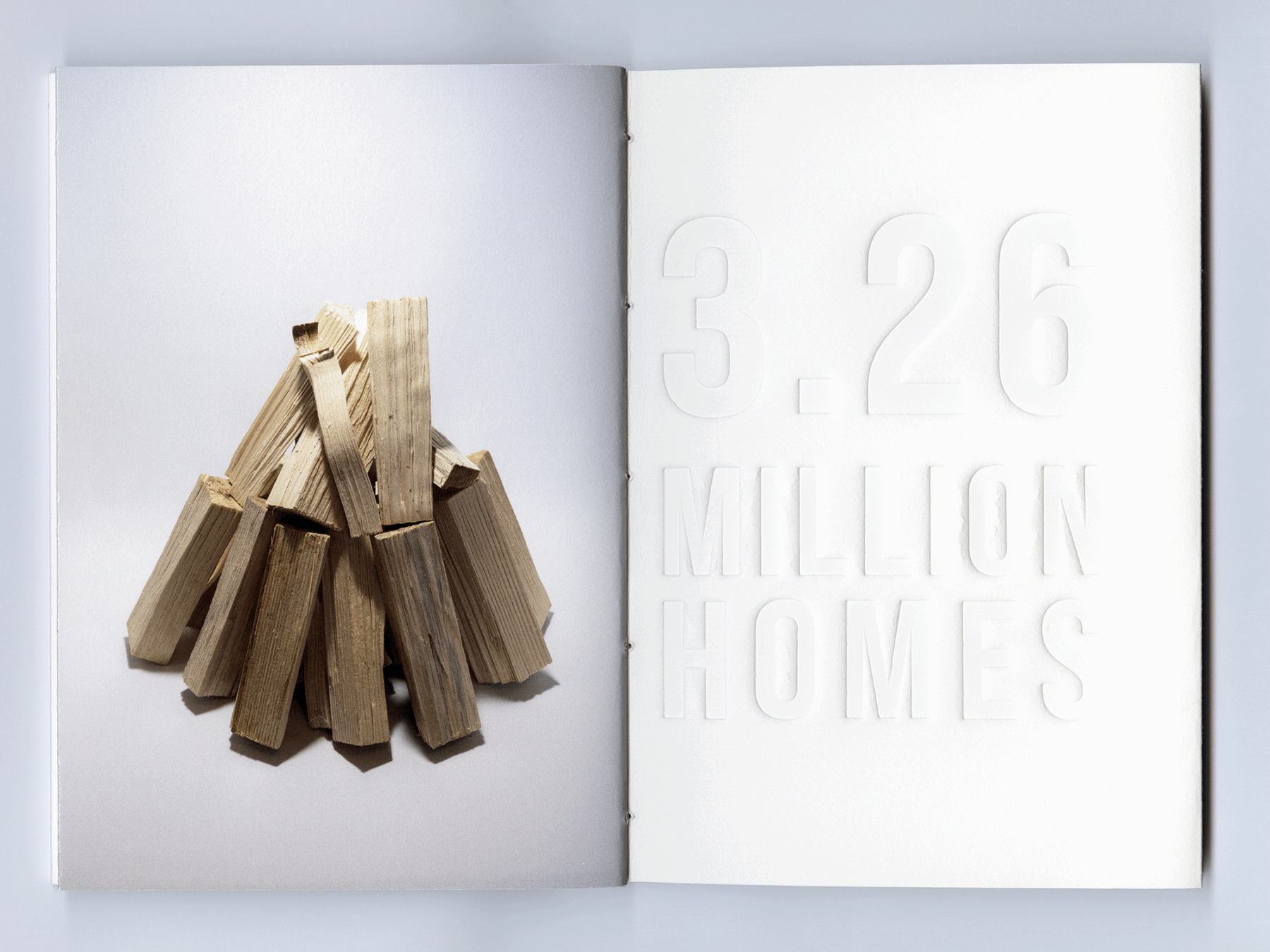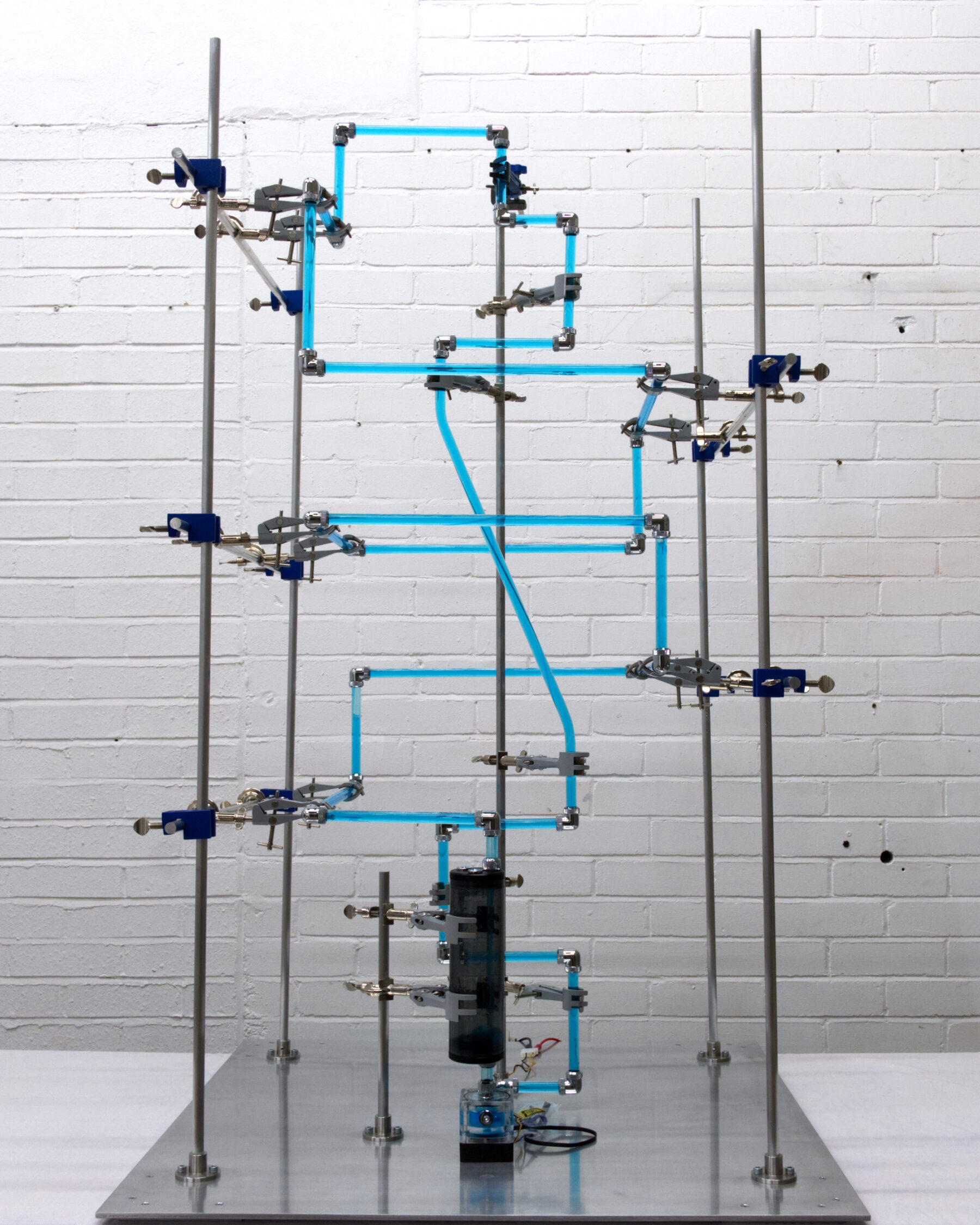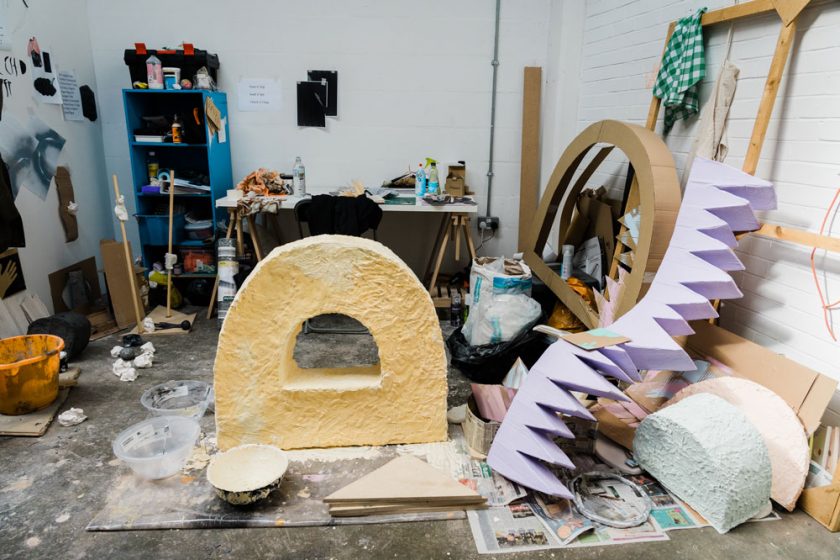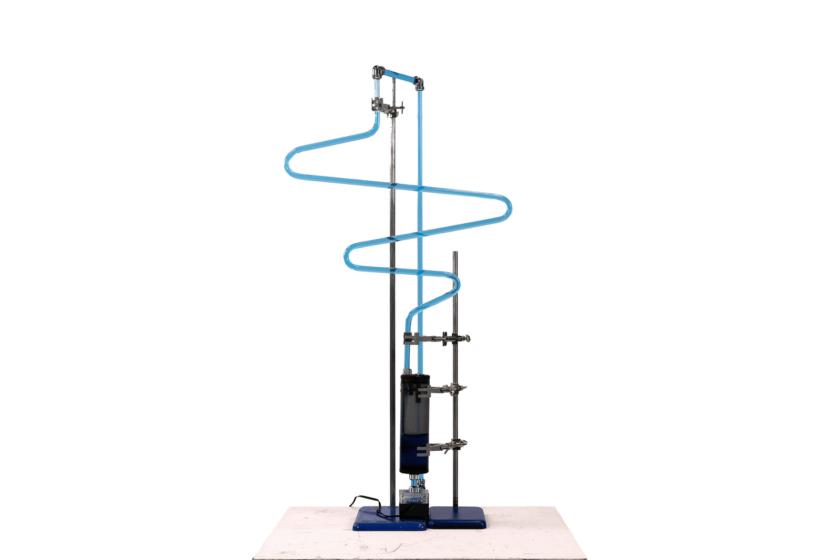Interview: Luke Jerram and Alexis Over-Papatzaneteas
The Dreamtime Fellowship is a programme initiated and fully funded by Bristol-based artist Luke Jerram, an artist recognised worldwide for his large-scale public engagement artworks. The initiative supports early to mid-career artists through a dedicated artistic development fund, 24 hour studio space for 12 months, access to artistic and professional development networks, as well as mentoring sessions led by Luke Jerram.
The Dreamtime Fellow for 2024-25 was Alexis Over-Papatzaneteas, a multidisciplinary artist working between sculpture, public art and book-making, who is interested in the growing proliferation of data and how data visualisation effects our societies knowledge of topics of socio-economic importance. This interview marks the end of Alexis’ tenure as Dreamtime Fellow, and celebrates the acquisition of his new book, 349, as part of the British Library‘s artist book collection.
Alexis:
I’m an artist based between Bristol and the South–West of England in Devon. I graduated from Falmouth in 2024 from the Communication Design MA. Before that, I studied in Bristol at UWE doing a photography degree. You and I first met through the Dreamtime Fellowship you were offering at Spike Island—during the interview process for that.
Luke:
And how would you describe the work you make?
Alexis:
There are a different elements to what I do, I’d say the main body of work that I’m focussing on at the moment is involved in how the rise and proliferation of data has changed the role of how data visualization in the context of modern society and how this sort of ever increasing role of data visualization plays on our perception and kind of understanding of the world around us. So I use data relating to kind of social or ecological issues as a means of driving kinetic movement in interactive or kinetic sculpture forms.
For example, I’ve worked with Surfers Against Sewage, using sewage discharge data to create artworks about water quality. It’s focused on water quality is based on the interpretation and kind of manipulation of raw sewage discharge data that’s provided by Surfers Against Sewage. And I think the really the goal is for it to act as a kind of interface between science and art and presenting data as a kind of symbolic visual form that’s a bit more emotive and kind of draws people in.
In this context, the use of data is more provocative. It’s a shift from traditional, pragmatic representations of data through graphs or maps into a more emotive aesthetic form, designed to engage curiosity and then maybe hit people with a slightly sinister undertone afterwards.
Luke:
Can you tell us more about that sinister undertone?
Alexis:
What I mean by that is that because a lot of the work relates to environmental or social issues, there’s a real issue underneath it. I want the work to be aesthetic and attractive as a means of drawing people in and engaging them, but there’s always a message or something I’m trying to highlight or make people aware of.
Luke:
So, the Dreamtime Fellowship is a program I set up to support emerging artists at the beginning of their careers. It provides some funding, a studio space, and mentoring. I wonder what you made of it—has it been useful? What are your thoughts about it, and what do you feel you’ve achieved?
Alexis:
I’ve really enjoyed it. I’m really grateful to have had the opportunity. For me, it’s been a major step in developing my practice and creative career. It’s pushed me to be more ambitious—to build large-scale works and develop them. It’s given me the opportunity to dedicate a year to creating work in a professional context. The access to resources, mentoring, and peer-to-peer learning has really aided my development and allowed me to connect with established practitioners, critics, and curators through the network of artists based here. That’s been amazingly useful.
Luke:
Yes, I suppose the fellowship is a little island for an artist to swim to—a safe place to be before you swim to the next island. Hopefully it helps ensure that artists continue, because so many give up after graduating.
Alexis:
yeah, I think being part of the community at Spike has been really helpful. Talking to established artists about their experiences or asking for advice has helped me through a lot. Being able to talk to you about the logistical and practical challenges of creating large-scale works and managing those projects has been amazingly useful.
Luke:
Great! Were there specific ideas you were able to explore during this time?
Alexis:
I decided to split the year into two. I spent the first half developing a large-scale sculpture that was displayed for Spike Island Open Studios, which was a development of the water quality project. The first six months were devoted to prototyping, designing, and testing that. Once it was functioning, playing with how it could be exhibited or displayed with light and how it could be made more interactive or installation-based.
The second part of the year I dedicated to developing and prototyping more ambitious, complex large-scale sculptures—some related to that project, some new. It’s been useful for me to get to a stage where I’m happy with something, then think, “Okay, what’s next? How far can I push this? How can I make it more interactive or larger scale? Can I make it a public artwork”
In addition to that, I’ve been printing and making artist books, and developing other ideas related to social and ecological issues—trying to come up with as many potential project ideas as possible.

Alexis Over-Papatzaneteas, '349' (2025). Courtesy the artist
Luke:
Tell us about this new book, which has been acquired by the British Library. Why a book?
Alexis:
The book’s called 349, referencing the average spend for each UK household on energy per day over 2024. It’s a series of abstract narratives that link to key facts and figures relating to fuel poverty. The association between the images and embossed texts are mysterious and reference a series of socio-economic problems.
I’ve always made artist books and enjoyed printmaking. Playing with the traditional aesthetic of a book as an art form really interests me. I’m really pleased to have the book acquired by the British Library as part of their artist book collection.
Luke:
Yeah, that’s cool! How did that come about?
Alexis:
I grew up around a well-known artist book maker, Ken Campbell, and since a young age, I’ve been inspired by his work. Through our relationship over the years, he gave me insight into who to approach and how to go about it. I approached the British Library and emailed them images of the book, explained who I was and what the book was about, and they said they wanted to aquire a copy.
Luke:
That’s amazing. It’ll be there forever—presumably as long as the British Library! Congratulations, that’s an extraordinary thing.
Alexis:
Thank you. It’s nice to have work acquired by a public institution. It makes you feel validated, as a stamp of approval.

Alexis Over-Papatzaneteas, '349' (2025). Courtesy the artist
Luke:
So, back to the Dreamtime Fellowship—what are you planning to do next, now that it’s come to an end?
Alexis:
I’ve managed to hold on to a studio space at Spike for the next year. That’s major and makes me feel grounded. I’m really pleased to have access to the space and community of people here.
Luke:
That’s amazing—there’s a real shortage of studios in Bristol. Is it upstairs or downstairs?
Alexis:
Downstairs in the sculpture area.
Luke:
Brilliant. That’ll act as an anchor and a base for you. It’s hard for an artist without a studio—you lose momentum. There’s something about being part of a community of artists, where you’re expected to come in and there’s an expectation that you’ll produce and show work that gives you a certain momentum. Being part of a community gives you a certain drive.
Alexis:
I think it is immensely important. Without that, you can feel isolated and out of touch. Being around people going through similar experiences pushes you to work harder, develop more ambitious ideas, and you’re inspired by the people around you. It’s been immensely valuable.
Luke:
Absolutely. Having peers to share ideas, problems, advice, or even just borrowing tools!
So, what challenges do artists at your stage face in Bristol, and what other support should be in place for artists leaving college?
Alexis:
Well other than the obvious social and economic challenges facing everyone—I think early-career artists need more opportunities to show work, mentoring programs, and creative networks. Encouragingly, in Bristol there seem to be a number of schemes that are trying to develop that and give support to people at the early stages of their careers through curator networks and knowledge exchanges. There’s more focus on the business side of being an artist and professional practice. There seems to be more support.
Personally, I’m encouraged to see Universities offering residencies and exchange programs for recent graduates, more of a focus of helping graduates for this transition, helping them transition by providing access to resources and networks, prizes for graduates. Theres more stepping stones.
The difference is that while you’re at university you’re constantly supported; once you finish, you lose that immediately and can feel like you’re adrift on an iceberg.
Luke:
An iceberg that’s melting!
Alexis:
But I think there’s a more conscious effort now to bridge that gap of the early stages of a career, what to expect and how to manage it.
For example, there are exchanges between universities across the country, Day School in Bristol, VASW Curator Bank network, and prizes like New Contemporaries and a number of graduate prizes.
Luke:
I’m reading a book called Why are Artists Poor? And one of the challenges is that universities are churning out so many artists—someone said 150,000 in South London alone — all chasing the same limited opportunities. A lot of the time artists can end up sort of undercutting one another to a certain degree.
There are even galleries out there that have approached me when I was at the beginning of my career and they’d want the artist to pay the gallery, to rent the space to exhibit the artwork. It’s just unbelievable.
Alexis:
I think that’s the case for a lot of creative careers, not just within art but also music and literature. Artists and creatives often aren’t paid their true value. I think this attitude is changing slightly, and I think there are organizations that you can join and artists that give you advice around business rates for example.
Luke:
Yes, the Arts Council and groups like the Artists Union can give advice on this.
It’s interesting—I looked it up and there used to be proper artists unions in the 1850s. Back then you’d actually be paid according to the amount of pigment like lapis lazuli you’re using in your canvas!
Alexis:
Exactly.
Luke:
Any other thoughts before we wrap up?
Alexis:
In terms of my next steps, I want to continue developing the ideas I’ve worked on in the last six months on a larger, more ambitious scale. And I just want to say thank you for giving me this opportunity and to everyone at Spike for their support and guidance. It really has been valuable to me.
Luke:
Thank you very much. It’s been a great pleasure. The mentoring over the last year has been fun and interesting for me too!

Courtesy Alexis Over-Papatzaneteas
ALEXIS OVER-PAPATZANETEAS
Alexis Over-Papatzaneteas is an interdisciplinary artist who graduated with an MA in Communication Design from Falmouth University in 2024. Over-Papatzaneteas undertook the Dreamtime Fellowship 2024, initiated and funded by Bristol-based artist Luke Jerram, and was recently awarded the D&AD New Blood Award for his work Silent Sea.
Over-Papatzaneteas’ interdisciplinary practice focuses on the notion that scientific data can become speculative when presented through the lens of artistic practice. His work explores the relationship between art and science, examining how art can interpret data as a means of activism.
www.papatz.com
LUKE JERRAM
Luke Jerram’s multidisciplinary practice involves the creation of sculptures, installations and live arts projects. Living in the Bristol but working internationally since 1997, Jerram has created a number of extraordinary art projects which have excited and inspired people around the globe.
With many of his artworks in permanent collections including the Metropolitan Museum of Art in New York and the Wellcome Collection in London, he also tours his art installations to art festivals and museums worldwide. In 2023 alone, he had over 115 exhibitions in 27 different countries, visited by more than 3 million people.
Having had a studio at Spike Island for more than 10 years, he recently set up his own studio at Paintworks. Now an established artist, he’s keen to support the next generation of artists in Bristol.
www.lukejerram.com


